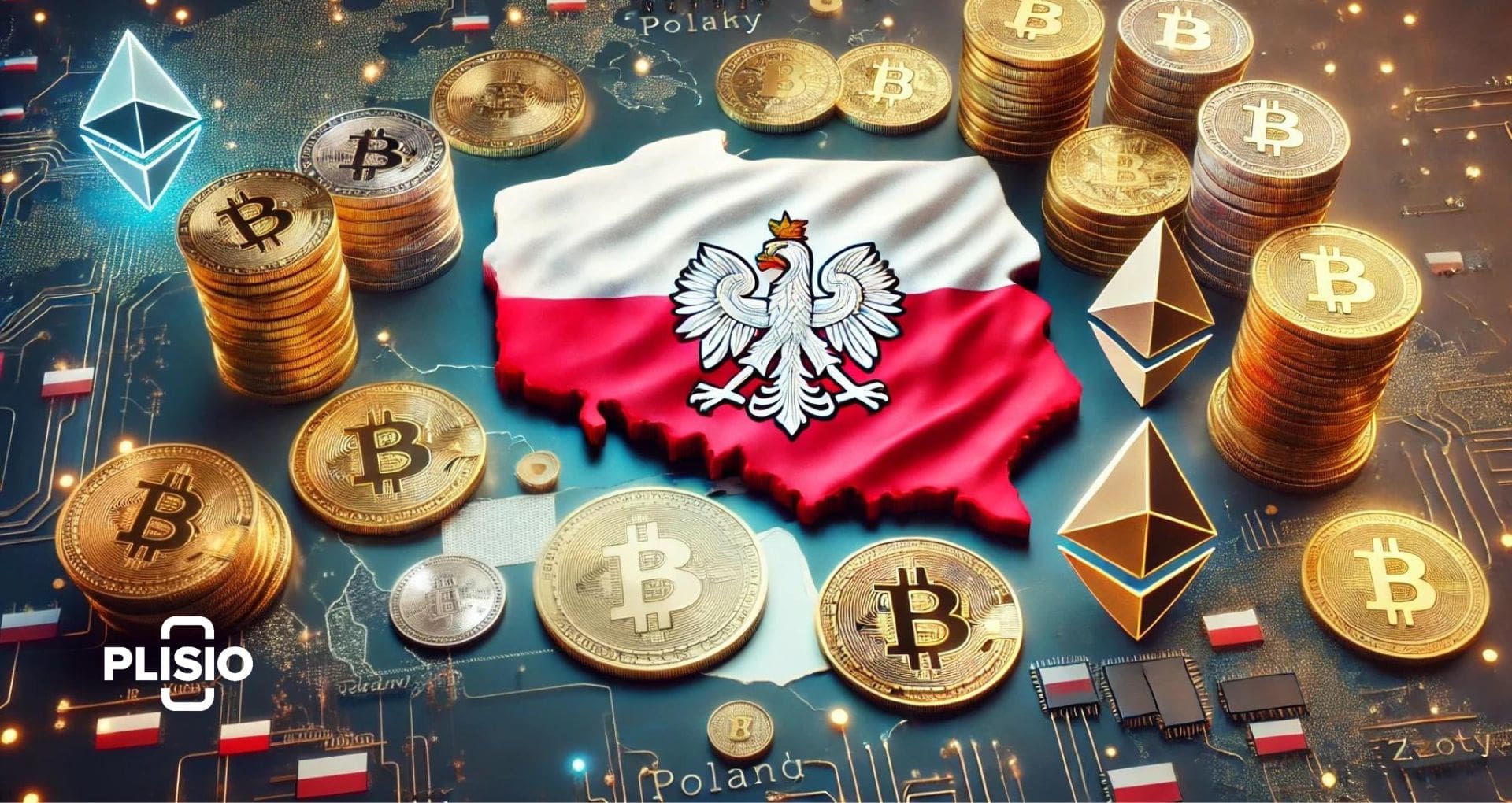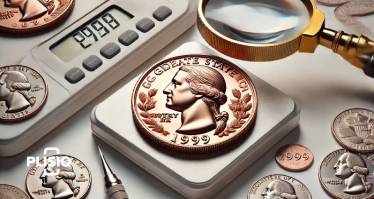Polish Currency: A Complete Guide to the Złoty

If you're planning a trip to Poland, it's important to get acquainted with the country's currency, the Polish złoty. The złoty has been Poland's official currency since 1924 and is used by over 38 million people. Its abbreviation is PLN, and it is divided into 100 groszy.
The złoty is the most traded currency in Central and Eastern Europe and ranks as the 21st most-traded currency globally. While many places in Poland accept credit cards, it's still a good idea to carry some złoty for smaller purchases or cash transactions.
The history of the złoty stretches back to the Middle Ages when it was originally a silver coin used in Poland and neighboring countries. Nowadays, the złoty comes in both coins and banknotes, with values ranging from 1 grosz to 500 złoty. Whether you're exchanging money before your trip or using an ATM in Poland, it’s helpful to understand the złoty’s value and its role in Poland’s economy.
Polish Currency
The official currency of Poland remains the złoty, and although the country is part of the European Union, there are no current plans to adopt the euro. It's important to note that Poland does not have a dual currency system, so the only legal tender you can use is the złoty.
Dealing with unfamiliar currency in a new country can feel daunting, but there's no need to worry. This guide aims to make your time in Poland as smooth as possible.
Historical Journey of the Polish Złoty
The złoty has a long history that dates back to the Middle Ages when Poland used various coins like pennies, ducats, and florins. The first złoty coins were introduced in the 17th century, with the name “złoty,” meaning "golden" in Polish, referring to a gold coin worth 30 groszy.
In the 18th century, a monetary reform simplified the system by standardizing the złoty as the primary currency. After World War I, the zloty experienced devaluation, leading to the introduction of the Polish mark, and then the second złoty in 1924, which was pegged to the US dollar until the start of World War II.
The value of the złoty suffered during World War II, but after the war, Poland introduced the third złoty in 1950, which was tied to the Soviet ruble until the country transitioned to a market economy in 1990.
Polish coins
Poland's currency, the złoty, has a long and fascinating history, with coins playing a significant role in daily transactions. Today, there are six types of groszy coins: 1 grosz, 2 grosze, 5 groszy, 10 groszy, 20 groszy, and 50 groszy. These groszy coins function much like pennies or cents, with 100 groszy making up one złoty. Though their value is quite small — 1 grosz being worth much less than one English penny — they are still used for small transactions, such as paying for public restrooms in certain areas, especially outside city centers.
However, tipping with groszy is generally not recommended, as it could be seen as disrespectful due to their minimal value. Tourists often end up with a collection of groszy in their wallets or purses, as they are frequently given as change when using cash. Larger coins in the złoty currency include 1 złoty, 5 złoty, and 10 złoty, with banknotes starting at 10 złoty.
Historical Journey of Polish Coins
The origins of Polish coinage can be traced back to the 10th century when the denarius circulated in the Kingdom of Poland, made primarily of silver and copper. The grzywna, a precursor to modern currency, served as a unit of mass, equating to 240 denarii. By the 14th century, the Prague groschen became a dominant currency across Central Europe.
In the late 15th century, the Polish Sejm approved the creation of a national currency — the złoty, meaning "golden." It was based on a fixed exchange rate of 30 groszy to one złoty, a division that persisted for centuries. By the 18th century, reforms under King Stanisław II Augustus solidified the złoty as Poland’s primary currency, simplifying a once-complex system of monetary units.
Throughout Poland's turbulent history, the złoty remained a symbol of economic resilience. During the Kościuszko Uprising in 1794, paper money was introduced to combat economic collapse. The currency persisted through partitions, Napoleonic rule, and various geopolitical shifts.
The Second Złoty was introduced in 1924 to stabilize the post-war economy, pegged to the US dollar, but suffered during World War II and occupation. After the war, Poland launched the Third Złoty in 1950, which lasted until the fall of communism. Hyperinflation in the early 1990s led to the introduction of the Fourth Złoty in 1995, with redesigned coins and banknotes featuring Polish monarchs.
As Poland continues to be a member of the European Union, discussions about adopting the euro remain ongoing, though the złoty still holds its place as the country’s official currency.
Polish bank notes
Poland’s currency system includes six types of banknotes: 10 złoty, 20 złoty, 50 złoty, 100 złoty, 200 złoty, and 500 złoty. Each note has a distinct color and design, making them easy to distinguish. With such clear markings, it’s simple to identify the different denominations.
When it comes to obtaining Polish currency, there are a few ways to do so. In the UK, for example, travel agents and banks offer Polish money, but getting the best exchange rate depends on how much effort you’re willing to put in. Years ago, your options were limited to either a high street bank or a travel agent. While these options still exist, other alternatives now allow for maximizing your cash value, which we’ll explore later.
It’s always a good idea to have some Polish currency on hand before you land in Poland, as airport exchange counters typically offer poor rates.
Historical Design of Polish Banknotes
Polish banknotes range in size from 12 to 15 centimeters in length and 60 to 75 millimeters in width, with their design steeped in the country’s rich history. On the front of each note, you’ll find portraits of Polish monarchs in royal attire, arranged in the order of their reigns. On the reverse, important historical landmarks, early coins, and cultural symbols are displayed, often framed by architectural motifs such as columns, windows, and portals.
The series, which began in 1994, features notable figures like Mieszko I on the 10 złoty note, Boleslaus I the Brave on the 20 złoty, and Sigismund I the Old on the 200 złoty note. In 2016, a 500 złoty note was introduced featuring John III Sobieski. Each denomination grows in size as the value increases, and the colors of the notes range from browns and pinks to blues, greens, and golds.
These detailed banknotes not only serve as currency but also as artistic representations of Poland’s history and cultural heritage.
Can You Use USD in Poland?
The US dollar (USD) is not commonly accepted in Poland, as it is not legal tender. You may encounter difficulties using USD for purchases. While some banks and exchange offices in larger cities might accept USD, the exchange rates are often not favorable. It's best to use złoty for transactions.
Can You Pay with Euro in Poland?
Despite being a member of the European Union (EU), Poland has not yet adopted the euro as its currency. Therefore, the euro is not widely accepted for payments. In some tourist areas, certain hotels, restaurants, and shops may accept the euro, but the exchange rate might not work in your favor. It’s better to use złoty to avoid any confusion or extra fees.
Can You Use Crypto in Poland?
In Poland, while cryptocurrency is not considered legal tender, its use is growing, especially in major cities and among tech-savvy businesses. Some shops, online retailers, and even restaurants are beginning to accept popular cryptocurrencies like Bitcoin and Ethereum for payments. However, widespread acceptance is still limited, and traditional methods such as cash or cards are generally preferred for day-to-day transactions. It's also worth noting that cryptocurrency regulations in Poland are developing, with authorities working on clearer frameworks for their use and taxation. If you're planning to use crypto in Poland, it's best to check ahead with the specific places you're visiting to ensure they accept it.
Exchanging Currency in Poland
When traveling to Poland, you’ll need to exchange your currency for the Polish złoty (PLN). You can do this at banks, exchange offices, or some hotels. Banks typically offer the most favorable exchange rates, though they may charge a commission. Exchange offices might have higher rates and fees, so it's a good idea to compare rates before making a transaction.
Where to Exchange Polish Currency?
You can exchange złoty at banks, exchange offices, and some hotels throughout Poland. Banks generally provide the best exchange rates but may charge a fee. Exchange offices might offer less favorable rates, so comparing options is recommended before exchanging your money.
Important Tips for Exchanging Currency in Poland
Before you exchange your currency in Poland, here are some key points to keep in mind:
- Compare Exchange Rates: Always shop around for the best exchange rates to ensure you get the most value for your money.
- Be Cautious of Scams: Stick to reputable exchange offices or banks to avoid falling victim to fraudulent services.
- Avoid Airports and Train Stations: Currency exchange locations in these areas often have unfavorable rates and high fees.
- Exchange Only What You Need: Change just enough currency for your immediate use, and keep your receipts in case you want to exchange any leftover money back later.
- Check Bank Fees: Contact your bank or credit card provider to see if they charge foreign transaction fees or offer benefits like travel rewards.
Tips to Avoid Currency Exchange Scams in Poland
When exchanging currency in Poland, it's important to stay alert to avoid potential scams. Here are some tips to help protect yourself:
- Choose Reputable Exchange Offices: Opt for well-established exchange offices in busy areas with good reputations. Avoid exchanging money on the street or in unfamiliar, small offices. Check online reviews and ratings to ensure reliability.
- Verify the Exchange Rate: Before making any exchange, double-check the current exchange rate using an online currency converter or by asking the exchange office. This ensures you're getting a fair deal.
- Count Your Money Carefully: Always count the money you receive before leaving the exchange office. Confirm that you've received the correct amount and inspect the bills to ensure they are genuine.
- Stay Focused: Beware of distractions while handling your money. Scammers may try to divert your attention in order to steal your cash or swap it for counterfeit bills.
- Use ATMs Safely: ATMs are a secure and convenient option for withdrawing money, but always be cautious of skimming devices. Shield the keypad when entering your PIN and report any unusual behavior or devices attached to the ATM to the bank.
By staying vigilant and following these tips, you can minimize the risk of being scammed while exchanging currency in Poland.




